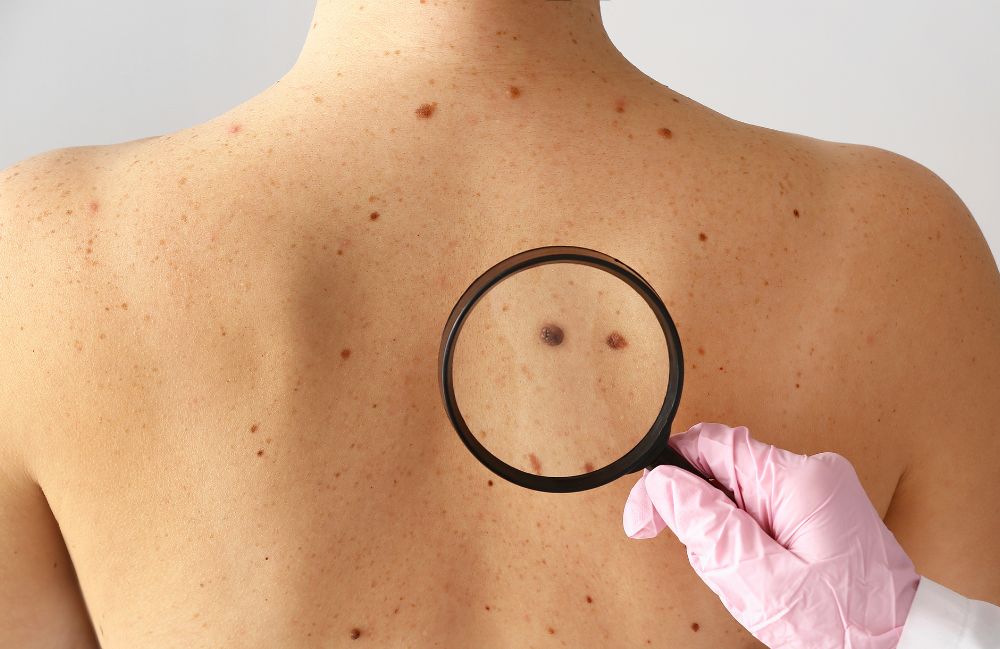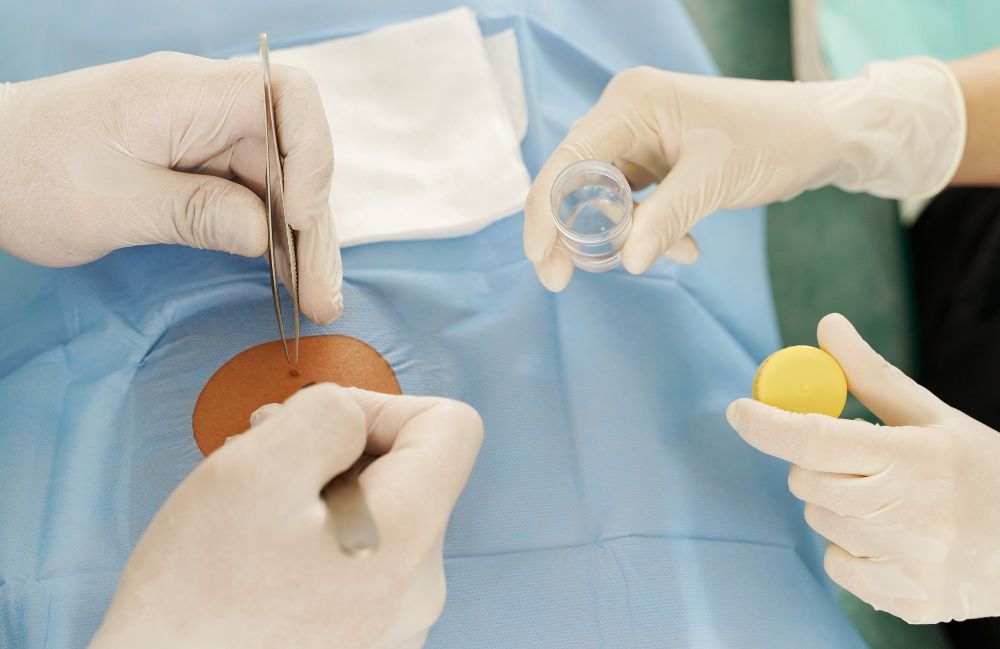
What is a Mole?
A mole, or nevus, is a small skin growth that typically appears brown or black. Moles occur when skin cells called melanocytes cluster together instead of spreading evenly across the skin. Most moles emerge during childhood or teenage years and may change in size, shape, or color over time.
Causes of Atypical Moles
Atypical moles, also referred to as dysplastic nevi, differ from regular moles in appearance and may mimic melanoma, a serious form of skin cancer. Although their exact cause isn’t fully understood, contributing factors include:
- Genetics: A family history of melanoma or atypical moles significantly increases risk.
- Sun exposure: UV rays from sunlight or tanning beds can promote the development of irregular moles.
- Skin type: Fair-skinned individuals with light hair and eyes are more likely to develop atypical moles or skin cancer.
Symptoms of Atypical Moles
Atypical moles tend to be larger and more irregular than common moles. Key warning signs to watch for include:
- Asymmetry: One half of the mole does not mirror the other.
- Border: Edges that appear uneven, jagged, or poorly defined.
- Color: Uneven pigmentation or multiple colors within the mole.
- Diameter: A size exceeding 6mm, about the size of a pencil eraser.
Treatment Options
At Metropolis Dermatology in Costa Mesa, we offer a variety of treatment solutions for atypical moles, tailored to your specific needs:
- Mole/Skin Checks: Regular skin exams by a qualified dermatologist help identify any unusual moles early. Your dermatologist will conduct a detailed examination to assess the health of your skin and moles.
- Laser Treatment: Non-cancerous moles can be removed effectively with laser technology, offering a non-invasive solution without the need for surgery.
- Excision: If a mole appears suspicious, it can be surgically removed and sent for a biopsy to determine if it is cancerous.

FAQs
How often should I have a mole check?
An annual skin exam is recommended, especially for individuals with a history of sun exposure, fair skin, or a family history of melanoma.
Are all moles dangerous?
No, most moles are benign. However, it is crucial to have any irregular or changing moles evaluated by a dermatologist.
Can moles change over time?
Yes, moles can alter in size, shape, or color. If you notice any changes, schedule a skin check promptly.
Is mole removal a painful procedure?
Mole removal is typically quick and pain-free, performed under local anesthesia to ensure your comfort.
What precautions should I take if I have a family history of melanoma?
Regular dermatological check-ups and diligent sun protection are essential for reducing your risk.
Hear from
Real Patients

Schedule Your Consultation Today!
If you are concerned about a mole or want to take proactive steps to maintain your skin health, Metropolis Dermatology in Costa Mesa, CA is here to assist. Schedule your mole/skin check today for expert care and early detection!
